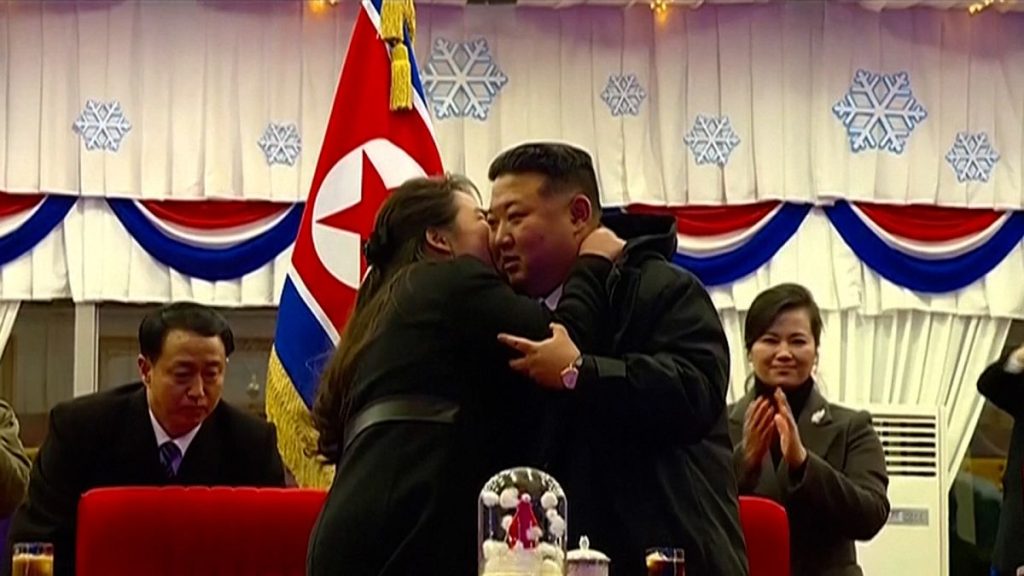Kim Jong-un, the enigmatic leader of the Democratic People’s Republic of Korea (DPRK), ushered in the new year of 2025 with a noteworthy public appearance at the May Day Stadium in Pyongyang, accompanied by his daughter, Ju Ae. This joint appearance further solidifies the young girl’s growing presence in the North Korean public sphere, fueling speculation about her potential future role within the regime. Holding hands as they entered the stadium, the father-daughter duo were seated alongside high-ranking officials, a visual representation of Ju Ae’s increasing prominence within the North Korean power structure. The choice of a New Year’s Eve celebration for this appearance underscores the regime’s intent to project an image of stability and continuity, with Ju Ae symbolizing the next generation of leadership.
The New Year’s Eve festivities at the May Day Stadium marked a departure from the DPRK’s traditional “mass games.” These elaborate spectacles, renowned for their meticulously choreographed displays of synchronized dancing and gymnastics involving thousands of performers, were often symbolic of national unity and the regime’s ideology. In a shift towards a more contemporary form of entertainment, the 2025 celebration showcased ice skating and singing performances, potentially reflecting a desire to present a more modern and accessible image to both domestic and international audiences. This departure from tradition could also indicate a shift in internal priorities, possibly due to resource constraints or a strategic recalibration of propaganda efforts.
The culmination of the New Year’s Eve event featured a countdown to midnight, followed by a dazzling fireworks display. This marked a return to a more public display of celebration, as the DPRK had largely refrained from broadcasting live fireworks events since 2018. The resumption of this practice in 2025, with Kim Jong-un and his daughter prominently featured, suggests a deliberate effort to project an image of national celebration and confidence. The intimate moment shared between father and daughter, captured in a hug and kiss as the new year commenced, served to humanize Kim Jong-un and further elevate Ju Ae’s public image.
The strategic significance of these public appearances by Kim Jong-un and his daughter extends beyond mere familial affection. By showcasing Ju Ae at important national events, the regime is cultivating an aura of dynastic succession and preparing the ground for a potential future leadership role. While no official pronouncements have been made regarding her future within the DPRK’s political hierarchy, these carefully orchestrated appearances suggest a deliberate and long-term strategy to familiarize the North Korean populace with her presence and associate her with the country’s leadership.
Furthermore, the chosen venue, the May Day Stadium, holds symbolic weight as the largest stadium in the world, capable of hosting vast crowds. Utilizing this venue for the New Year’s Eve celebration amplifies the message of national unity and reinforces the image of widespread public support for the regime. The presence of senior officials at the event further underscores the importance of the occasion and solidifies the perception of a unified and cohesive leadership structure.
In conclusion, the New Year’s Eve celebration at the May Day Stadium provided a carefully constructed spectacle that served multiple purposes for the North Korean regime. It presented a modernized image of the country, showcased the growing importance of Kim Jong-un’s daughter, and projected an aura of national unity and celebration. The event’s departure from traditional “mass games” and the return to broadcasting live fireworks suggest a shift in the regime’s public relations strategy, while the prominent featuring of Ju Ae signals a long-term plan to establish her within the North Korean power structure. The world will undoubtedly continue to observe the evolving role of this young figure in the DPRK’s future.














